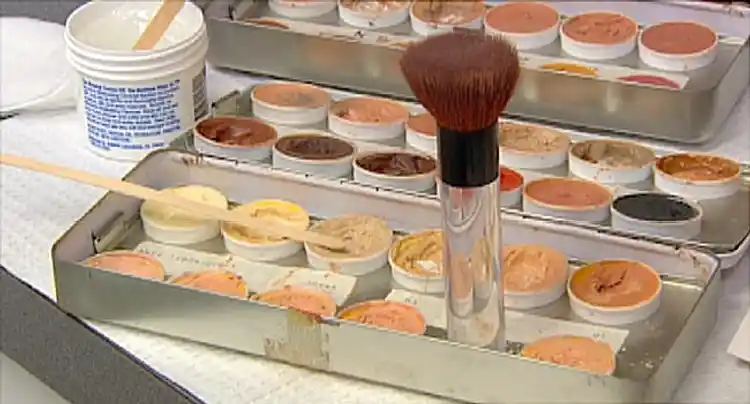Cosmetic Cover-Ups for Psoriasis

Hide Video Transcript
Video Transcript
ALISON O'NEIL
It doesn't have to become a huge focus. JANICE MCDONALD
Alison O'Neil specializes in what she calls appearance therapy, working with patients who often face debilitating injuries and skin conditions. She helps people like Carter cope with potentially embarrassing outbreaks of psoriasis. CARTER
It's not pretty right now, but it's a lot prettier than during the winter time when it really flares up bad. JANICE MCDONALD
Alison is going to help Carter minimize the appearance of his outbreaks with a technique called paramedical cosmetology, or corrective camouflage. CARTER
But ideally, you'd want to do this on an area that's not scaled up. ALISON O'NEIL
Preferably not scaled up, so use your medications. And the scaling gets under control, then you can camouflage the discoloration. CARTER
Right. JANICE MCDONALD
Begin by working with your doctor to find a medication to bring your scaling under control, and remember, never apply corrective camouflage to open skin lesions, unhealed cuts, or raw or irritated skin. ALISON O'NEIL
This product I'm going to show you is pretty much in general what most of these-- how most of these products are made with the same ingredients, and It's waterproof. It doesn't just come off with soap and water. JANICE MCDONALD
Camouflage products can be purchased through makeup specialists, or even over-the-counter. Since most contain tout that wicks away natural moisture and can potentially irritate, it's best to start with a protective moisturizing barrier. Then it's a matter of matching skin tone, which usually requires a blend of several shades of concealer. ALISON O'NEIL
Here's your normal skin tone right here mixed with the green and then some of the red. It's OK to have some of the red shine through, but I'm going to get a different shade. JANICE MCDONALD: Use an applicator to get the product from the container, but to blend and apply, use your fingers. A little concealer goes a long way.
ALISON O'NEIL
If you can't see your fingerprint, you have too much product on your finger. Look for the fingerprint, and then you know. And then you're going to tap and press it right into the skin, just like we did on your finger, which is the firm pressure that which lays the base. All we want to do on your cheek is kind of break up the redness, and we don't need a whole lot of it. JANICE MCDONALD: Only light pressure is needed to pat the application. Too much pressure will likely result in the product coming off and sticking to your fingers. Because of the scaling and creases psoriasis can cause, be sure to take your time.
ALISON O'NEIL
This may take three, four set kind of applications, and the reason you use your hand is because the warmth of your finger actually warms this product. So that it will actually stay in place. JANICE MCDONALD
Don't get frustrated if you don't achieve 100% coverage. Perfection is not the goal in working with cosmetic camouflage. ALISON O'NEIL
You can get 100% improvement if you're going to have a photograph taken, and then it looks normal. CARTER
Right, I understand. ALISON O'NEIL
But if we get beyond 65%, 70%, usually it looks like there's a product covering. JANICE MCDONALD
Also remember that while you may know where the outbreak is, other people do not. Having camouflage should help make it easier to keep it that way. For WebMD, I'm Janice McDonald. 